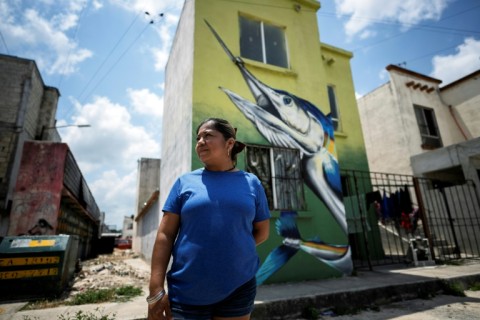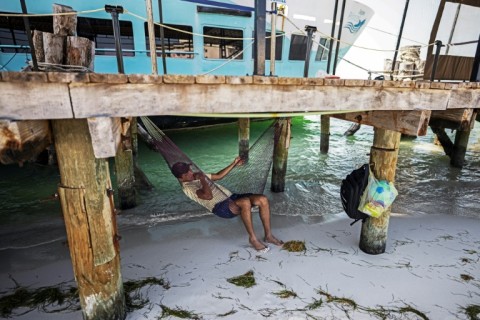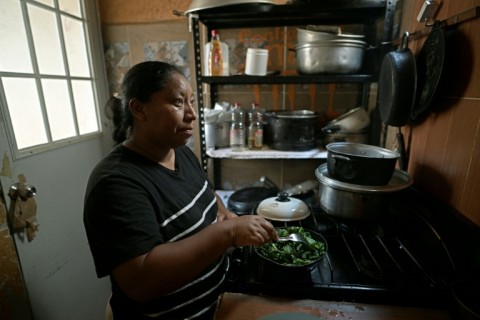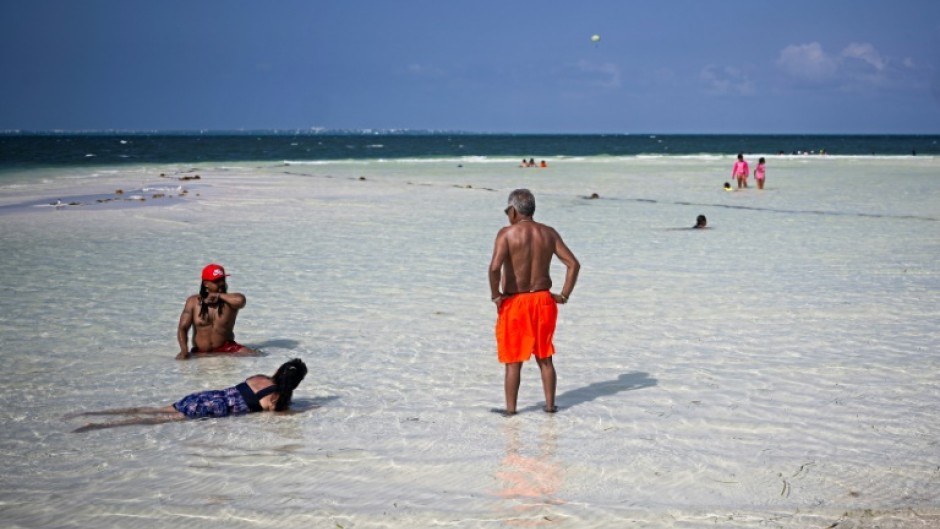CANCUN - The sun-kissed beaches and turquoise waters of Mexico's Caribbean resort of Cancun attract millions of visitors, but schoolteacher Yazmin Teran is lucky if she enjoys them a few times a year.
Like other Mexicans living on the fringes of the major tourist destination, she feels her working-class suburb and the luxury hotel zone are worlds apart.
In 2023 alone, 32.7 million visitors touched down at Cancun airport -- 63 percent of them foreigners, according to official data.
Few are likely to visit Villas Otoch Paraiso, where Teran lives.
A quick internet search shows that the housing development, established in 2007 and home to about 40,000 people, is considered to be "Cancun's most dangerous neighbourhood."
Teran remembers how excited she was when she arrived in Cancun 15 years ago from the southern state of Oaxaca so her husband could work in the tourism sector.

"You see the beaches, the tourist places and the hotel zone on television and you say 'wow!' the 41-year-old said.
"But when you come here to Cancun you realize that it's not all like that," Teran said.
"Those of us who live and work here hardly have time to go and enjoy the beach and sea," she said, adding that such visits happened "about five times a year."
Families without cars must make do with limited public transport.
And although the beaches are public, in practice access is restricted to hotel guests.
- High prices, low incomes -
"Going to the beach can be expensive," said Teran, a community leader who organizes activities to help children and the elderly.
"We have to find a way to get there, buy things once we're there or bring our own lunch," she added.
She estimates that a family needs about 500 pesos ($30) to spend a day at the beach in the hotel zone.

The average monthly salary in Cancun is around 7,500 pesos ($450), according to the specialized portal Talent.com.
In high season, a single night in a five-star hotel on Cancun's luxury hotel strip can cost $2,000.
When Villas Otoch was built its affordable homes attracted construction and tourism workers from impoverished southern Mexican states such as Chiapas or Tabasco, as well as countries such as Guatemala or Cuba.
Seen from above, the symmetrical blocks of 14,000 identical homes measuring just 35 square meters give an impression of order.
At ground level, the street furniture is decaying and drug dealers who work in the tourist zone are also present.
According to local authorities and media, violence has increased since 2018 due to increased flows of weapons and turf wars between the country's two most powerful drug cartels.
- 'Last frontier' -
Every day when their parents go out to earn a living, many children are left alone -- 40 percent of them do not go to school, said Sofia Ochoa, a cultural manager who has been working in the neighbourhood since 2022.
Some children stay inside while others play in the streets or are recruited by gangs.
Shootings and sexual abuse involving children are common, Ochoa said.
"Many don't know the beach" and adjoining area, which to them "seems like the last frontier -- very far to reach," she added.

Ochoa and residents organize events to revive public spaces in Villas Otoch, such as parks that were at once time abandoned to gang members.
Rosalina Gomez came to Cancun from the southern state of Chiapas fleeing poverty and an abusive father.
Her main experience of Cancun's tourism industry has been her job as a cleaner at the airport.
"Sometimes tourists give you clothes, a tip, a soda or say thank you because the bathroom's clean. That's what I like the most," she said.
Gomez, whose 15-year-old daughter Perla del Mar has cerebral palsy, last visited the sea four years ago.
"I don't feel comfortable going to have fun at the beach knowing that I have a bedridden daughter," she said.
She hopes that her 17-year-old son Ricardo, who is studying food and beverages, will be able to get a job in tourism.
"Once he finishes his studies, I'll stop working and dedicate myself to her -- if God allows us," she said.
- by Jean Arce

